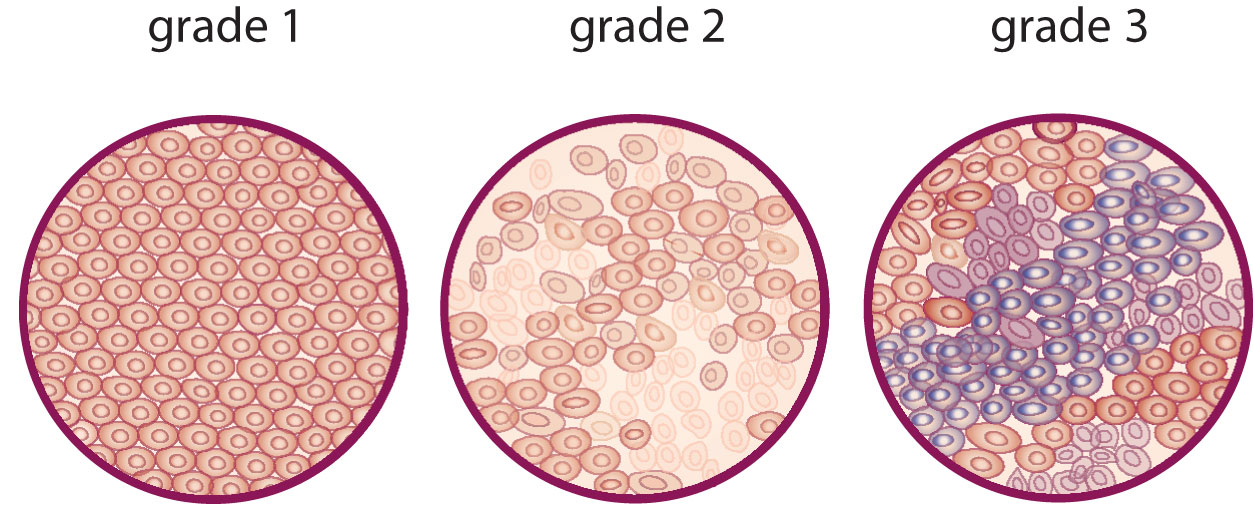Vaginal cancer
Diagnosis and tests
Diagnosing vaginal cancer
Your family doctor (GP) will talk to you about your symptoms. They will probably need to examine the area. This may include an internal exam. An instrument called a speculum is gently put into your vagina (like when you have a smear test) to open it slightly so that the doctor can do a thorough examination.
Your GP will refer you to hospital if they think you need more tests. Other tests you might have include:
A pelvic examination is where a doctor or nurse examines your abdomen (tummy) and pelvis. Your doctor might also do an internal vaginal exam by putting a gloved finger into your vagina to check for any abnormal changes.
The doctor uses a colposcope to look more closely at your vagina. A colposcope is a type of microscope with a very bright light that helps your doctor to check for any abnormal changes. It doesn’t go inside you.
A sample of tissue from your vagina is taken and looked at under a microscope in the lab to see if there are any cancer cells. The biopsy can be done during a colposcopy, with a local anaesthetic to numb the area. You may have an excision biopsy or a punch biopsy.
Excision biopsy: Removes the whole area of abnormal tissue. Depending on the size of the area removed you may need to have stitches, which will dissolve over a period of weeks.
Punch biopsy: Removes a small piece of the abnormal area under local anaesthetic. You won’t need stitches.
A gynaecologist is a doctor who specialises in treating problems with the female reproductive system, e.g. vagina, vulva, uterus (womb) and ovaries.

If you are diagnosed with vaginal cancer we're here for you.
Our cancer nurses are here if you need information or just want to talk. They can help you to understand your diagnosis, what to expect, send you information and tell you about our services.
Further tests for vaginal cancer
You may need further tests to give your doctors more information about your general health and about the cancer. For example:
- Examination under anaesthetic (EUA): Your doctor looks at your vagina while you are asleep under general anaesthetic. This is done to see if the cancer is found only in your vagina. A sample of vaginal cells (biopsy) can be taken during an EUA.
- MRI scan: A scan that uses magnetic energy to build up a picture of the tissues inside your body.
- CT scan: A type of X-ray that gives a detailed picture of the tissues inside your body.
- PET - CT scan: A radioactive injection that will show up any cancer spread to other parts of your body on a CT scan picture.
- Chest X-ray: An X-ray to check for any problems in the chest bones that may be related to the vaginal cancer or caused from something else. It can also help the medical team see if there are any problems in the lungs.
The tests you have can help to:
- Stage your cancer. This means finding out the size and position of the cancer.
- Grade your cancer. Grading describes how quickly the cancer may grow and spread and how it might respond to treatment.
Some tests may be used see how you are responding to treatment.
Waiting for test results
It can take a number of weeks for all the test results to come back. Waiting for results can be an anxious time for you. It may help to talk things over with the specialist nurse or with a relative or close friend. You can also call our Support Line on 1800 200 700 or visit a Daffodil Centre to speak to a cancer nurse.
What are the grades of vaginal cancer?
Grading describes the cancer cells - what they look like and how fast they might grow and spread.
Low-grade cancer is more slow growing while high-grade cancer is usually faster-growing.

What are the stages of vaginal cancer?
Staging means finding out how big the cancer is and if it has spread to other parts of your body. Staging will help your doctor to plan the best treatment for you.
The stages of vaginal cancer are usually numbered 1 to 4 and can be further subdivided into A and B. A higher number, such as stage 4, means a more advanced cancer.
- Pre-cancer – VAIN (vaginal intraepithelial neoplasia): This means there are abnormal cells in the vagina. These cells are not cancerous but can in time lead to an invasive cancer.
- Stage 1: Cancer is in the wall of the vagina but has not spread anywhere else.
- Stage 2: Cancer has begun to spread outside the wall of the vagina into the surrounding tissues, but has not yet reached the internal walls of the pelvis.
- Stage 3: Cancer has spread from the vaginal wall into the surrounding tissues and has reached the walls of the pelvis. Cancer may also be present in the surrounding lymph nodes.
- Stage 4a: The cancer has spread from the vagina into the bladder and/or back passage (rectum).
- Stage 4b: The cancer has spread from the vagina into distant organs like the lungs or liver.
Knowing the stage and grade of your cancer helps your team to plan the best treatment for you. Staging and grading can be hard to understand, so ask your doctor and nurse for more information if you need it.
Continue reading about vaginal cancer




Get help & support

Support Line
Free support pack

